When temperatures hit 30 degrees, holidaymakers may be happy, but for people working outdoors, high temperatures can actually be very dangerous. In this blog article, we explain your rights as an employee when working in the sun, the dangers this involves and the best ways you can protect yourself against them.
Working outdoors – dangers in the summer
Working outdoors is hard and challenging for the body at any time of year. Whether on the motorway, on building sites or in the fields – bricklayers, road workers and farmers are exposed to direct sunlight in all seasons and throughout the working day, because outdoor workplaces don’t usually offer any protection from the sun.
Depending on skin type, the body reacts differently to direct sunlight. But even if you enjoy the feeling of the sun on your skin and you don’t sweat that easily, the sun can still be dangerous for you. Underestimating the dangers of UV radiation and extreme heat in particular may have serious consequences, because if our bodies are exposed to high temperatures for longer periods of time, this may result in sunstroke, heat exhaustion or heatstroke, which could even be fatal.
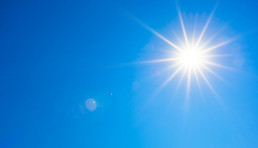
The best example of heatstroke is the parked car in summer. Regardless of whether the window is slightly open or fully closed – after just 30 minutes, temperatures in the car will rise to 46°C and after 60 minutes, to a life-threatening 56°C. If outside temperatures exceed 30°C, this also has an effect on temperatures inside the vehicle, which may rise up to 60°C. In such extreme heat, the body also heats up and quickly loses a lot of fluid through sweating, which results in heat cramps. The same thing happens if you over-exert yourself while working outdoors. Over-exertion can also dehydrate your body and at worst may even be fatal. This happens when you suffer from heatstroke that isn’t treated. However, humidity plays a significant role here – the higher it is, the worse the heat affects your body temperature. The heat not only impacts your body temperature but can also have an effect on your concentration. If the high temperatures affect you in such a way that you can no longer think clearly and the only thing on your mind is getting a cool drink of water, you lose sight of what you’re doing at work. Particularly on building sites and road construction while operating heavy machinery, this may have life-threatening consequences.
As well as the heat, the UV radiation of the sun also represents a major risk when working outdoors. If you spend several hours a day working in the sun, you will also become increasingly sunburnt with each day that passes. This has an effect on your skin’s health and may lead to skin cancer. The UV radiation may also affect the efficacy of medicines such as antibiotics and blood pressure and heart medication.
A danger that is usually forgotten about alongside UV radiation is the concentration of ozone in the air. This has an effect on physical endurance and performance. If the ozone concentrations are high, this may lead to breathing difficulties or even cause conjunctivitis. Ozone also irritates the eyes, which may result in a burning sensation in the eyes and headaches.
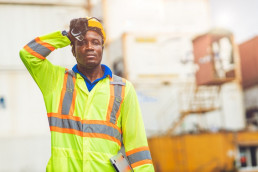
If you notice symptoms of sunstroke, heat exhaustion or heatstroke in yourself or one of your employees or colleagues, you must act immediately.
Possible symptoms of sunstroke include:
- bright red, hot face
- cool skin on the rest of the body
- stiff neck
- headaches
- nausea/vomiting
- clouding of consciousness
If these symptoms occur, the person should stop work immediately and be brought somewhere cool and shady. If they feel dizzy, they should lie down and keep their head elevated. If they are conscious, give them something to drink. Cool their face and neck with wet towels to lower their body temperature.
Heat exhaustion is characterised by the following symptoms:
- profuse, cold sweating and simultaneous shivering
- pale skin
- fast or weak pulse
- dizziness
- nausea
- muscle cramps
First aid for heat exhaustion also involves bringing the person to somewhere shady and ideally helping them lie down, if they feel dizzy. If the person is conscious, have them drink small sips of an oral-rehydration salt preparation.
In the event of heatstroke, the emergency services must be called immediately on 112 (if in Germany). Heatstroke can be recognised by the following signs:
- no sweating
- dry, red, hot skin
- body temperature > 39.5°C
- throbbing headache
- rapid, strong pulse
- dizziness
- nausea/vomiting
- confusion
- feeling light-headed
- loss of consciousness
While waiting for the emergency services to arrive, move the person somewhere cool and shady, remove heavy clothing and give them fluids. You can also encourage them to shower with cool water or apply cooling compresses. If the person is unconscious, place them in the recovery position, check if they are breathing and start resuscitation if necessary.
Working outdoors: occupational safety
To prevent employees suffering as a result of heat or sun, employers must ensure that they are protected and take the necessary precautionary and protective measures.
At temperatures over 30°C, outdoor physical activity should be avoided between 10 am and 3 pm, as this is when the sun is at its strongest and thus produces the hottest conditions and highest levels of UV radiation. It is therefore advisable to reschedule working hours to the morning and evening. But even then, it’s also advisable to work in the shade whenever possible. To protect against the sun, all employees should use UV sunscreen on any uncovered skin. The sunscreen should be water-resistant, as otherwise sweating will reduce the effectiveness of the UV protection, and have an SPF of at least 30. As the sunscreen’s UV filter becomes less effective after around 2 hours, you should reapply regularly to ensure continuous UV protection.
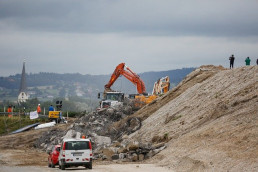
Besides external protection, what you eat also plays an important role. For example, you should only eat light meals. This is because the body already has enough to do in coping with the heat – it’s therefore better to eat easily digestible food when temperatures are high, so that the body doesn’t need to work harder to digest the food and unnecessarily sap your energy. Drinking enough is essential in summer – especially when working in the sun. You should therefore take regular drinks breaks – ideally in the shade. And preferably before you feel thirsty – because when you feel thirsty, your body is already too dehydrated, which quickly has an effect on your health. If you drink too little and too infrequently, you will usually experience headaches, you may subsequently faint and, in the worst-case scenario, your kidney function may be impaired. When doing strenuous physical work in hot temperatures, you should drink 3–4 litres of fluid a day. The choice of fluid also plays a role, because only sufficient quantities of the right kind of drinks give your body the necessary energy and protect you from dehydration. You should ensure that your drink is
- alcohol-free,
- unsweetened and
- not too fizzy
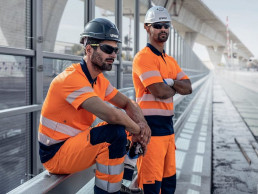
For best results. It should also not contain too much caffeine and should only be slightly chilled. Water, fruit juice mixed with water and fruit tea are the best options for strenuous work in the sun.
Breathable clothing and UV-protective work clothing
Choosing the right clothing is a necessary protective measure for work in the sun – it should ensure protection against UV radiation and heat and also counteract the latter. Here, breathable clothing that is light-coloured and not constricting should be used. The clothing in the uvex suXXeed collection and the collection 26 are extremely comfortable and loose-fitting and are perfect for hot summer days on the construction site or in the fields.
If your feet are too hot and start to sweat, this has a negative effect on the whole body. That’s why wearing breathable work shoes is extremely important. uvex has developed a technology that enables excess heat and moisture to be diverted away from the feet and to evaporate: uvex climazone technology. This ensures a comfortable temperature in your safety shoes even in the hottest weather. Breathable insoles can also help. The uvex 1 comfortable climatic insole is made of highly breathable and moisture-absorbing materials and also supports the gait with the help of cushioning zones. Discover our breathable shoes for everyday wear, business meetings and the building site now.
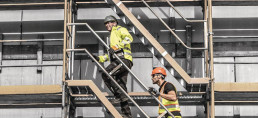
Protective clothing for outdoor workers should always include safety spectacles. As already described, UV radiation and ozone pollution damages the eyes. In many sufferers, cataracts are often caused by excessive exposure to the sun at work. This is because too much UV radiation leads to accelerated clouding of the lens. Safety spectacles should therefore offer the highest possible UV protection and have anti-fog properties to ensure the lenses won’t impair vision even during physical exertion. Safety spectacle lenses made in accordance with EN 170 meet the performance requirements for protecting the eyes against ultraviolet radiation. uvex safety spectacles with polycarbonate lenses offer UV 400 protection and thus fulfil the highest protection criteria.
Sweaty and swollen hands can be life-threatening when operating heavy machinery. You should therefore also carefully consider suitability for summer work when choosing your safety gloves. With 375 sweat glands per square centimetre on the palms and the insides of the fingers, and another 200 on the back of the hands, our hands have the most sweat glands of anywhere on the whole body. In summer, the sweat glands on the hands are particularly active – and most safety gloves act like a greenhouse. A safety glove with a pleasant environment for the hands and breathable material provides the necessary grip to ensure high product quality and wearer acceptance. The innovative uvex climazone coating technology ensures breathability and, thanks to the material’s high moisture retention properties, your hands stay dry and protected.
Do you also work outdoors and are exposed to UV radiation and heat every day in the summer? Feel free to share your experiences from the construction site with us. Do you work in agriculture? Then our blog post “Protective clothing for gardening and landscaping – PPE for the spring” will probably also be of interest to you. You can read more about the dangers of UV radiation for the eyes in our article “The outlook is sunny – but don’t forget about UV protection!” If you have any further questions about breathable clothing for working in the sun, please don’t hesitate to contact us!